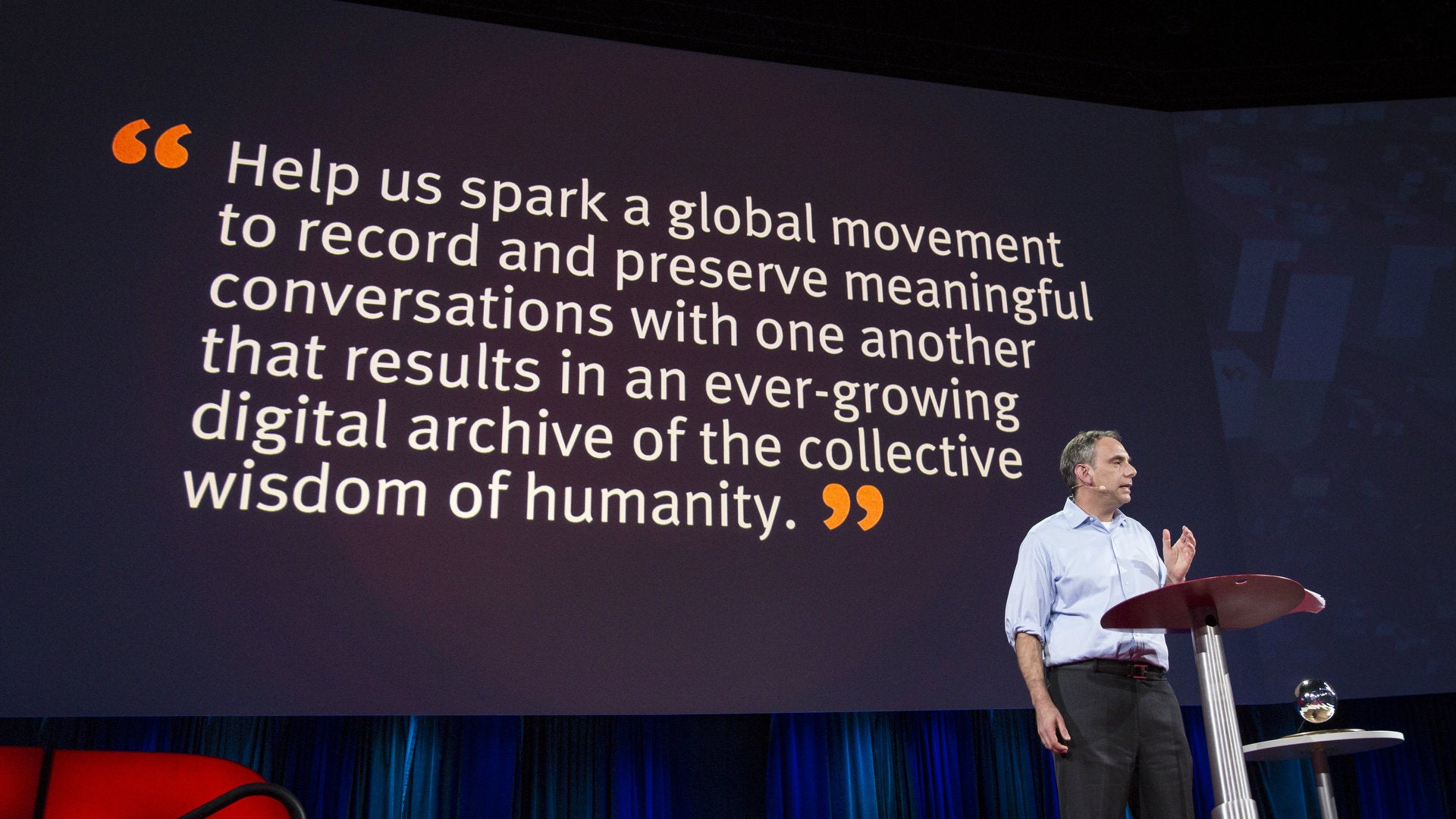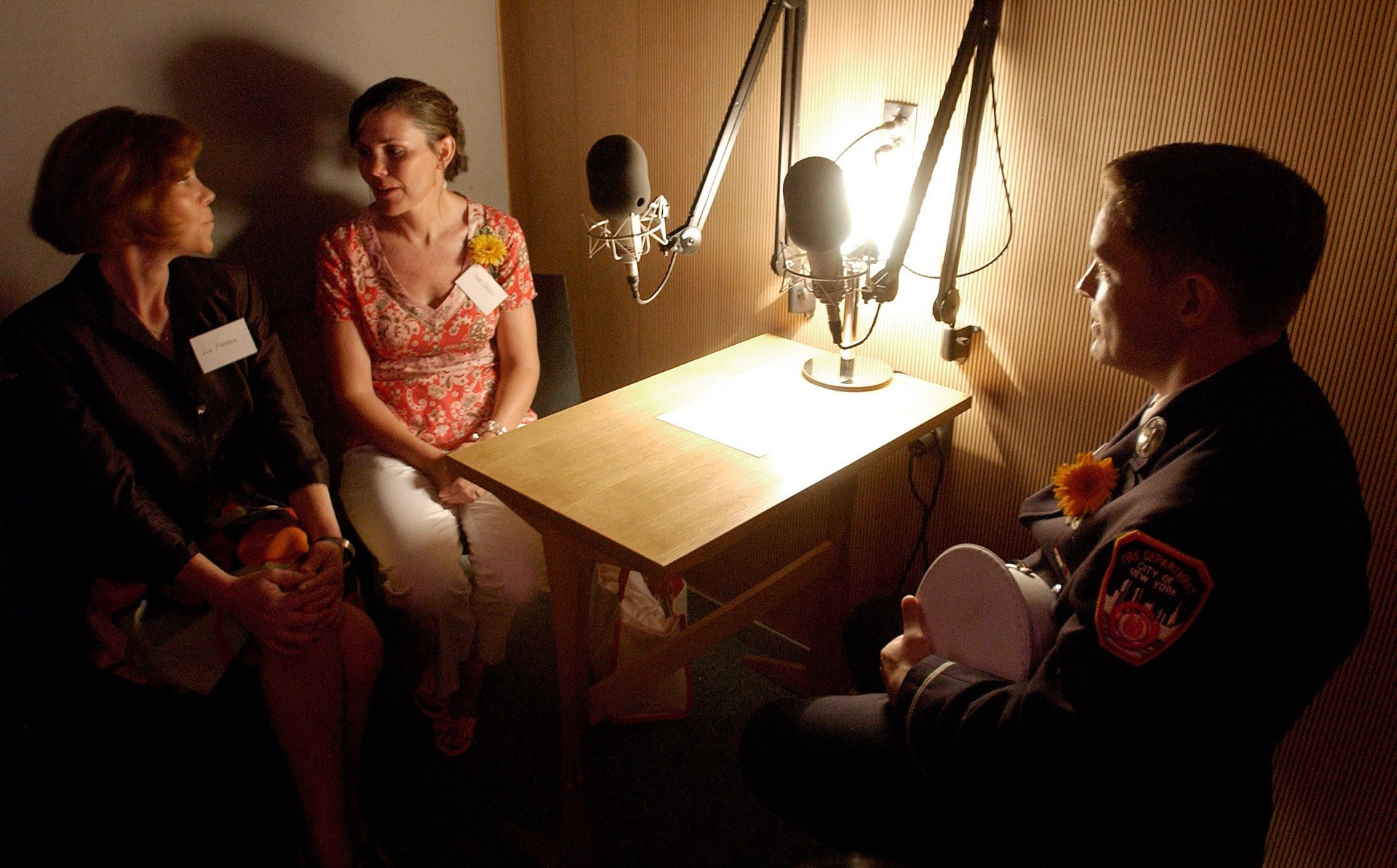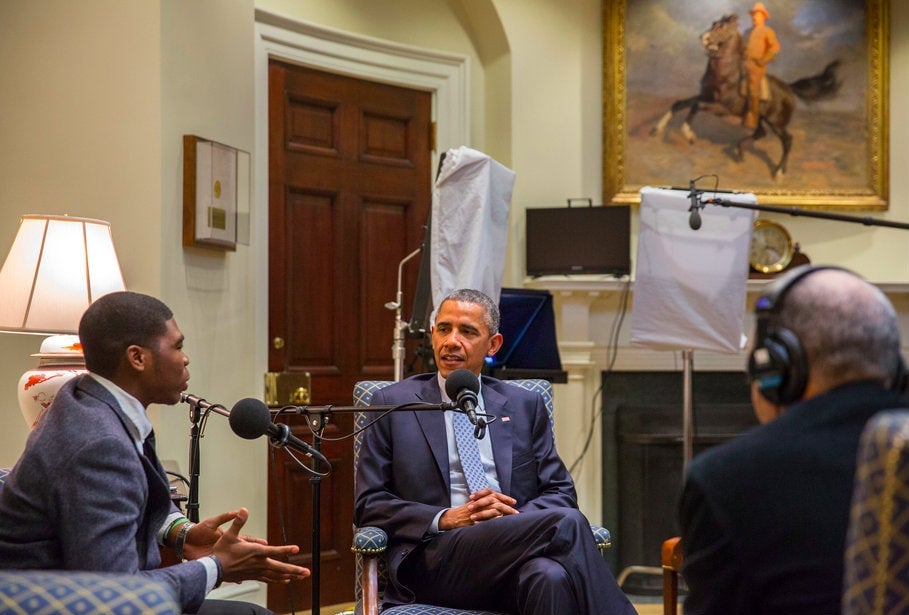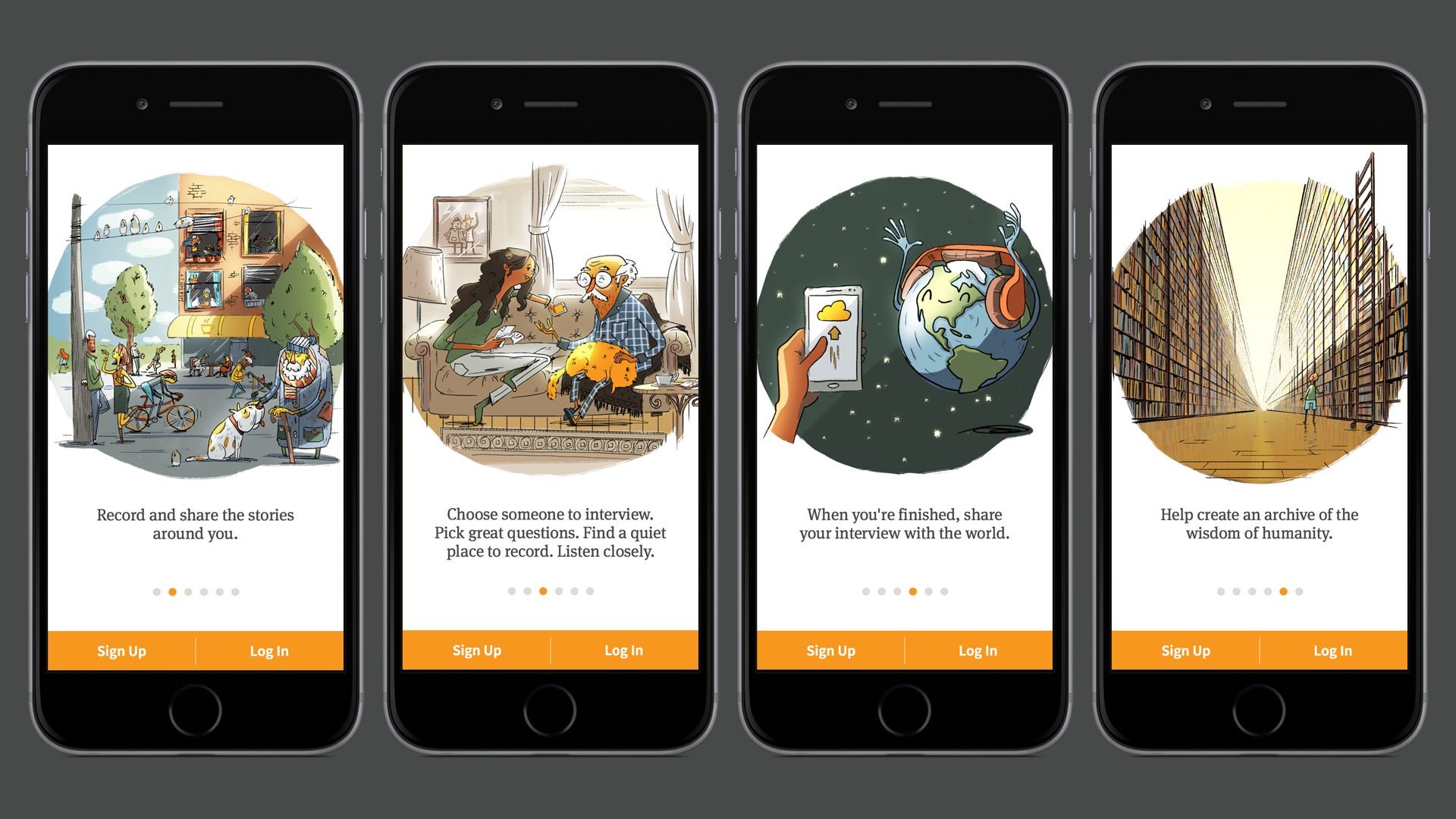StoryCorps, the beloved US oral history project, is now going global
Starting from a single recording booth in New York City’s Grand Central Terminal, StoryCorps has quickly become a cultural institution in the US. Now, it wants to go global.


Starting from a single recording booth in New York City’s Grand Central Terminal, StoryCorps has quickly become a cultural institution in the US. Now, it wants to go global.
Since its 2003 founding, the nonprofit has collected and archived more than 50,000 interviews, engaging more than 100,000 Americans, making it the largest single collection of human voices ever gathered.

StoryCorps operates on a simple premise: provide two people a quiet space and 40 minutes of uninterrupted time for a meaningful, face-to-face conversation. The audio is recorded, shared, and sent to the US Library of Congress, where it will be preserved for generations to come.

It has archived everything from an interview between president Obama and a White House mentee, to families memorializing the stories of lives lost on September 11, 2001. It has also provided a platform for The Historias Initiative, preserving Latino stories and conversations.

Its founder, former radio producer David Isay, has won numerous awards, including a MacArthur fellowship (aka the genius grant) and the 2015 TED Prize, which bestows the winner “one wish to change the world,” with $1 million seed money and access to TED’s influential network. The TED Prize has bolstered initiatives such as Bono’s ONE Campaign, artist JR’s Inside Out Project, author Karen Armstrong’s Charter for Compassion, and architect Cameron Sinclair’s Open Architecture program.
“Here is my wish,” Isay said on March 17, to the crowd gathered at the TED conference in Vancouver, Canada. “That you will help us to take everything we’ve learned through StoryCorps and bring it to the world so that anyone, anywhere, can easily record a meaningful interview with another human being, which then will be archived for history.”
For its global expansion, Isay announced a free app (on beta) specially developed for the project, allowing people to participate without having to find a StoryCorps recording booth. The app serves as facilitator for the interview, prompting participants with questions, and helping them record, archive, and share the audio file. “At this moment, when so much of how we communicate is fleeting and inconsequential, join us in creating this digital archive of conversations that are enduring,” urged Isay.